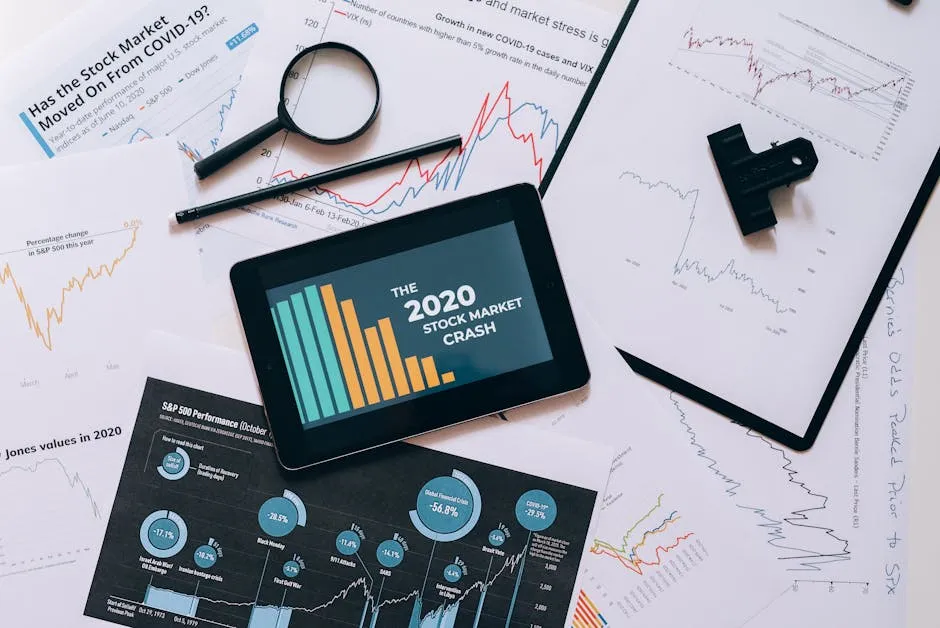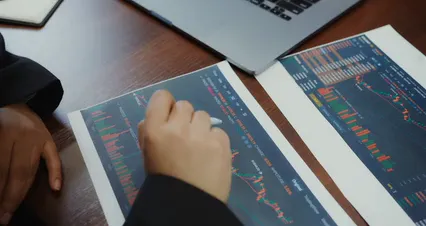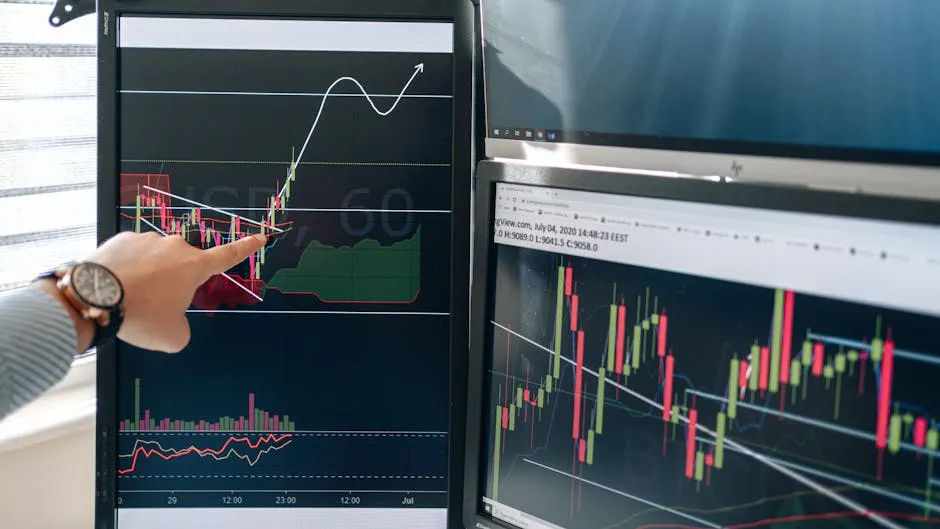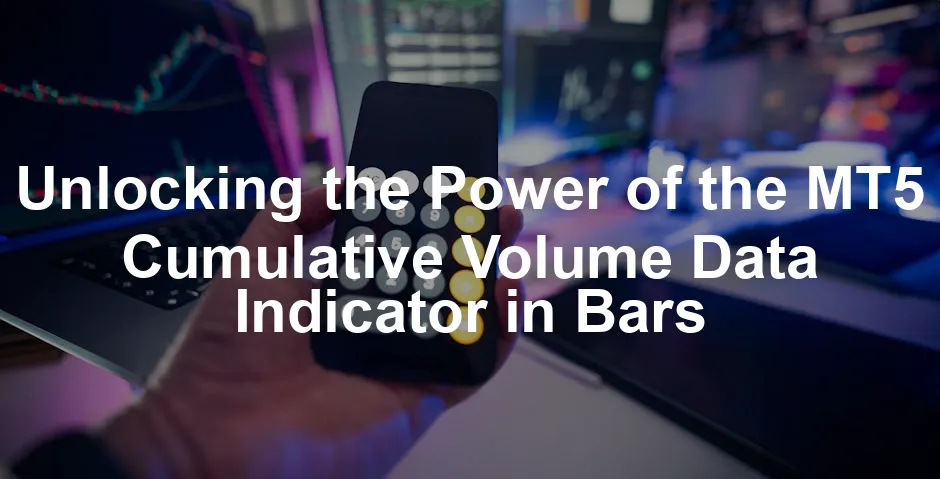Introduction
Welcome to the thrilling universe of trading! Here, numbers aren’t just digits; they’re the lifeblood of market movements. Each tick, each volume fluctuation forms a story. Understanding these tales can be your secret weapon. Enter the MT5 Cumulative Volume Data Indicator in bars—a game-changer for traders seeking clarity amid chaos.
This powerful tool doesn’t merely decorate your charts. Instead, it acts like a lighthouse, guiding you through the fog of market volatility. Imagine a world where you can see the pulse of the market through cumulative volume, revealing where traders are rushing in or stepping back. This indicator accumulates volume data over specified periods, providing a visual feast for your analytical cravings.
With a simple glance, you can gauge buying and selling pressures—essential for making informed decisions. The visual representation in bar format helps you quickly discern trends, ensuring that you’re not just another trader lost in the crowd.
In this post, we will break down the features, benefits, and practical applications of this indispensable indicator. Get ready to transform your trading approach from reactive to proactive. You’ll learn how to interpret the data effectively, ensuring you’re not just trading but trading smart. So, buckle up as we unlock the potential of the MT5 Cumulative Volume Data Indicator in bars, and get ready to refine your trading strategy like never before!

Summary
The MT5 Cumulative Volume Data Indicator in bars offers a unique perspective on market dynamics. By aggregating volume data over defined timeframes, this tool reveals the underlying buying and selling pressures that shape market behavior.
What can you expect from this guide? We will cover the essential aspects of this indicator, including:
- Key Features: Understand the visual representation of cumulative volume and how it functions across multiple timeframes.
- How it Works: Learn about the calculations behind cumulative volume and how to interpret the results accurately.
- Practical Applications: Discover real-world examples of traders using this indicator to enhance their strategies.
- Combining Indicators: Explore methods for integrating cumulative volume data with other trading indicators for deeper insights.
By the end of this article, you’ll not only grasp how the MT5 Cumulative Volume Data Indicator operates but also how to leverage its capabilities to boost your trading success. Are you ready to elevate your trading game? Let’s dive into the details!

Understanding Cumulative Volume Data
What is the Cumulative Volume Data Indicator?
The Cumulative Volume Data Indicator is a powerful tool in trading. It captures total trading volume over specified periods, aggregating this data into a visually engaging format. This indicator is crucial for analyzing market dynamics. Unlike traditional volume indicators, which show volume for individual periods, this tool provides a cumulative view, making it easier to spot trends and shifts in buying or selling pressure.
The importance of the Cumulative Volume Data Indicator lies in its ability to reveal market sentiment. A rising cumulative volume often suggests increasing interest from traders, hinting at potential price movements. On the other hand, declining volume may indicate waning interest, which can precede price corrections or reversals.
The calculation of cumulative volume involves summing the volume of each period. For example, consider a trading session where the volumes for three consecutive periods are 1500, 2000, and 1000. The cumulative volume is calculated as follows:
- Bar 1: 1500
- Bar 2: 1500 + 2000 = 3500
- Bar 3: 1500 + 2000 + 1000 = 4500
This straightforward approach allows traders to visualize market activity and make informed decisions quickly.

Key Features and Benefits
One standout feature is its visual representation in bar format. Each bar corresponds to cumulative volume, providing an instant overview of market activity. This format allows traders to assess trends at a glance, enhancing quick decision-making.
The indicator is applicable across various timeframes—be it M1, H1, or D1. This versatility means traders can use it for both short-term and long-term strategies. For instance, day traders might focus on M1 charts to identify rapid volume changes, while swing traders may prefer H1 or D1 charts for broader trends.
Another significant benefit is its ability to indicate buying and selling pressure. Rising cumulative volume can signify strong buying interest, while falling volume may point to potential selling pressure. This insight is invaluable for traders looking to time their entries and exits effectively.
By visualizing cumulative volume clearly, traders can enhance their market analysis. This indicator not only simplifies data interpretation but also empowers traders to align their strategies with market movements. Understanding these key features sets the stage for effectively using the Cumulative Volume Data Indicator in your trading approach.
In the next sections, we will delve deeper into how this indicator works and its practical applications for traders. And speaking of practical applications, if you’re looking to dive deeper into trading strategies, consider picking up Trading for a Living by Dr. Alexander Elder. It’s a classic that can sharpen your trading mindset!

How the Indicator Works
Calculation Process
To grasp how cumulative volume is calculated, let’s break it down into simple steps. This indicator aggregates volume over time, summing up the total trades executed. It transforms what could be a jumbled mess of numbers into a beautiful bar chart that tells a story.
Imagine you have three trading periods with the following volumes:
| Time Period | Volume |
|---|---|
| 1 | 1500 |
| 2 | 2000 |
| 3 | 1000 |
The cumulative volume for each period would be calculated like this:
- Bar 1: 1500
- Bar 2: 1500 + 2000 = 3500
- Bar 3: 1500 + 2000 + 1000 = 4500
Now, with this data, you can create a bar chart that visually represents the accumulation of volume. Each bar reflects the total volume up to that point, making it easier to track trading activity over time.

Interpretation of Volume Trends
Understanding the trends in cumulative volume is crucial for identifying potential market movements. When cumulative volume rises, it typically indicates growing interest and participation in the market. This can suggest that prices may follow suit, moving upward as buyers step in.
Conversely, a decline in cumulative volume can raise red flags. It might signal that traders are losing interest, potentially foreshadowing a price correction or downturn. Recognizing these patterns is key to anticipating market shifts.
Traders often look for divergences between price and volume. For example, if prices are climbing while cumulative volume is decreasing, it could hint at a weakening trend. Always keep an eye on volume trends—these can serve as early warning signals for potential reversals or continuations. And speaking of understanding market movements, don’t miss out on The Intelligent Investor by Benjamin Graham. It’s a must-read for any investor!

Common Misinterpretations
Even seasoned traders can misinterpret volume data. One common misconception is equating high volume with a strong market. High volume indicates activity but doesn’t necessarily indicate direction. It’s important to consider whether the volume is associated with buying or selling pressure.
Another pitfall is assuming that rising cumulative volume always leads to price increases. While rising volume can indicate strong buying interest, it can also reflect panic selling in a downtrend. Context is everything. Always analyze volume in conjunction with price movements and other indicators for a clearer picture.
To avoid these pitfalls, traders should develop a habit of cross-referencing cumulative volume with price action and other indicators. This holistic approach enhances decision-making and reduces the likelihood of costly errors. By understanding these common misinterpretations, you can navigate the complexities of volume data with greater confidence. And if you want to enhance your trading psychology, consider The Psychology of Trading by Brett N. Steenbarger for invaluable insights!

Practical Applications in Trading
Example Scenarios
Analyzing a Bullish Trend with Rising Cumulative Volume
Imagine you’re watching a currency pair that’s on a bullish run. As the price climbs, you notice that the cumulative volume is also increasing. This is no coincidence! Rising cumulative volume alongside price movement typically indicates strong buying interest. Traders are confidently entering positions, pushing prices higher.
Let’s say you identify a pattern where each price increase correlates with higher cumulative volume. This scenario reinforces your bullish outlook. It suggests that the trend may continue, as eager buyers are driving the price up. It’s a classic case of “the more, the merrier.” If you see this trend, it might be a great time to consider entering a long position. Just remember, keep an eye on volume trends—if they start to dwindle while the price remains elevated, it could signal a potential shift.

Identifying Red Flags with Decreasing Volume During Price Increases
Now, let’s flip the script. Picture this: the price of an asset is climbing, but the cumulative volume is steadily decreasing. This is like a red flag waving in front of you. It suggests that the price increase might be losing steam. Fewer traders are willing to support the higher prices, which can mean trouble ahead.
For instance, if the price reaches a new high, but the cumulative volume fails to keep pace, it’s time to be cautious. This divergence can indicate a weakening trend. It’s a classic case of “fake it till you make it.” If traders are not rushing in to buy, the price may soon correct itself. As a savvy trader, you might want to tighten your stop-loss orders or even consider taking profits if you spot this scenario. And for those looking to enhance their trading strategies, check out How to Day Trade for a Living by Andrew Aziz for practical insights!

Risk Management Techniques
Using Cumulative Volume Data to Set Stop-Loss and Take-Profit Levels
Effective trading isn’t just about making profits; it’s also about managing risk. Cumulative volume data can be a game changer when setting your stop-loss and take-profit levels.
For example, if you enter a trade during a bullish trend supported by rising cumulative volume, you can use this data to establish your stop-loss just below a significant support level. If the volume starts to decline, it might indicate a weakening trend, prompting you to adjust your stop-loss closer to your entry point. This way, you protect your profits while still allowing for potential gains.
On the flip side, when setting take-profit levels, consider where cumulative volume peaks. If the volume is high at a certain price level, it might suggest strong buying interest. Setting your take-profit just below this level can help you capture gains before potential reversals occur. And if you’re keen on understanding option strategies, don’t miss The Complete Guide to Option Strategies by Michael C. Thomsett. It’s a great resource!

Adjusting Position Sizes Based on Volume Indicators
Position sizing is crucial for risk management, and cumulative volume data can guide your decisions. When you notice increasing volume during a bullish trend, it indicates strong market interest. This could be a green light to increase your position size, as it suggests a higher likelihood of continued price movement.
Conversely, if you see a decrease in cumulative volume, you might want to tighten your position size. This indicates potential uncertainty in the market and could lead to higher volatility. Adjusting your position size based on volume data helps you stay aligned with market sentiment while managing risk effectively.
In summary, using cumulative volume data in these scenarios not only enhances your trading strategy but also protects your capital. By staying vigilant and reactive to volume trends, you position yourself for success in the ever-changing world of trading. And for those looking to improve their financial literacy, consider reading The Richest Man in Babylon by George S. Clason. It’s a timeless classic!

Conclusion
The MT5 Cumulative Volume Data Indicator in bars is a powerful ally for traders. It simplifies complex data, allowing for quick interpretation of market dynamics. By harnessing this tool, traders can gain insights into buying and selling pressures—essential for making informed decisions.
When you understand how this indicator works, you can integrate it into your trading strategies. This indicator shines in conjunction with others, enhancing your analytical capabilities. Imagine standing at the helm of your trading journey with a compass that points to potential opportunities!
As you navigate the financial seas, remember: knowledge is power. The right tools can significantly transform your trading approach. So, why wait? Start incorporating the cumulative volume indicator into your strategies today. Watch as it sharpens your decision-making process and leads you toward more profitable trades.
Incorporating the cumulative volume indicator into your trading strategies can significantly enhance your decision-making process. Learn more about the MT5 Cumulative Volume Data Indicator.
Trading doesn’t have to be a solo expedition. With the MT5 Cumulative Volume Data Indicator, you have a loyal companion in your quest for success. Embrace this tool, and set sail towards a brighter trading future!

FAQs
What is the MT5 Cumulative Volume Data Indicator?
The MT5 Cumulative Volume Data Indicator is a tool that calculates total trading volume over specific periods. It aggregates volume data in a visually appealing bar format. This makes it easier for traders to assess market activity and trends, aiding in informed decision-making.
How do I install the cumulative volume indicator in MT5?
To install the cumulative volume indicator in MT5, follow these steps: 1. Download the indicator file. 2. Open MetaTrader 5. 3. Go to “File” and click “Open Data Folder.” 4. Navigate to “MQL5” > “Indicators.” 5. Copy the downloaded file into this folder. 6. Restart MT5 to refresh the indicators list. 7. Find the indicator in the “Navigator” panel and drag it onto your chart.
Can I use this indicator for day trading?
Yes, the cumulative volume indicator is suitable for day trading. It provides real-time insights into volume trends, helping traders identify potential entry and exit points. Day traders can leverage this information to capture quick profits based on market movements.
What are common mistakes to avoid when using cumulative volume?
Common mistakes include misinterpreting high volume as a strong market signal without considering direction. Additionally, overlooking divergences between price and volume can lead to poor decisions. Always analyze cumulative volume alongside price action and other indicators for better insights.
Is the cumulative volume data indicator suitable for all markets?
Yes, the cumulative volume data indicator is applicable across various markets, including Forex, stocks, and cryptocurrencies. Its versatility allows traders to utilize it in different trading environments, making it a valuable tool for many trading styles.
Please let us know what you think about our content by leaving a comment down below!
Thank you for reading till here 🙂
All images from Pexels




